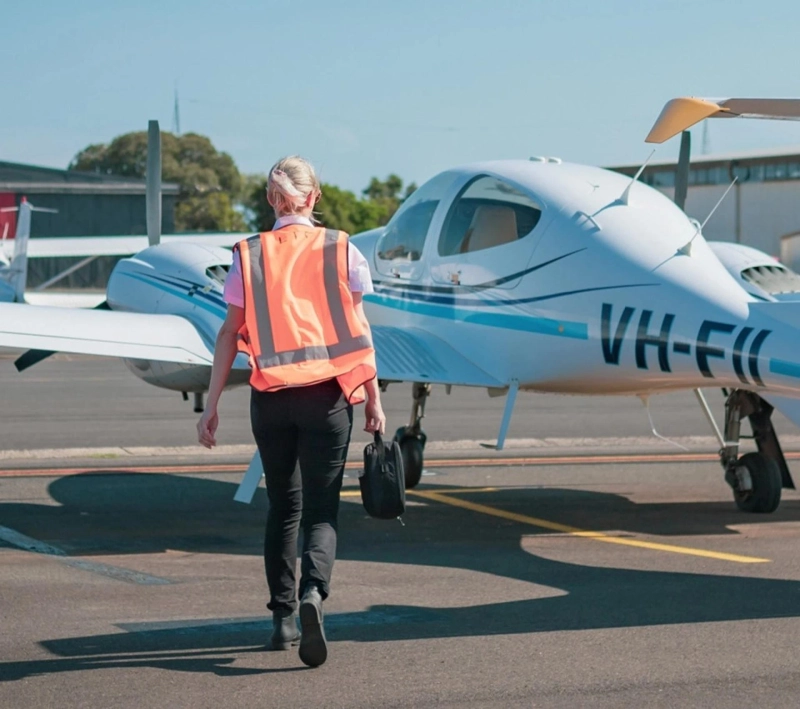In Australia’s aviation industry, aircraft maintenance logs are an essential component of safety, regulatory compliance, and operational efficiency.
Every aircraft must undergo rigorous maintenance and inspections to ensure it remains airworthy, and detailed records of these activities must be kept. Pilots, aircraft owners, and aviation professionals must be proficient in reading and interpreting maintenance logs to identify potential safety concerns and confirm that an aircraft meets all operational requirements before flight.
Understanding maintenance records is an important skill for those pursuing a commercial pilot license in Australia. It enhances a pilot’s technical knowledge and decision-making. Likewise, students enrolled in pilot training courses will benefit from learning how to assess aircraft documentation, as this knowledge directly contributes to ensuring safe and efficient operations.
What are Aircraft Maintenance Logs?
Maintenance logs are official records documenting the history of inspections, repairs, and component replacements for an aircraft. In Australia, aircraft maintenance and record-keeping must comply with the Civil Aviation Safety Authority (CASA) regulations, ensuring that all aircraft meet strict safety standards. These logs include a variety of documents, such as the aircraft’s airframe, engine, propeller, and avionics records, as well as compliance with airworthiness directives (ADs) and service bulletins (SBs).
Each log entry typically records the date of service, the aircraft’s total flight hours, the work performed, and the name and certification number of the licensed engineer who carried out the work. Regular maintenance intervals, such as the mandatory annual inspection or 100-hour service checks for certain aircraft, must be meticulously documented. Any deviation from required maintenance schedules could result in regulatory issues or increased safety risks.
Interpreting Maintenance Entries
Reading and interpreting maintenance logs requires a keen eye for detail and an understanding of aviation terminology. Each entry provides a snapshot of the aircraft’s current condition, and pilots should familiarise themselves with the key elements of each record.
The aircraft’s total time in service, often referred to as the Total Time Airframe (TTAF), helps pilots and engineers assess wear and tear on major components. Additionally, the Time Since Overhaul (TSOH) is critical for determining when an engine or other major parts require servicing. If an aircraft has exceeded the recommended hours without undergoing necessary overhauls, this could indicate an increased risk of mechanical failure.
Understanding the terminology used in maintenance logs is also essential. Entries often include abbreviations such as “AD” (Airworthiness Directive), “MEL” (Minimum Equipment List), and “TTIS” (Total Time in Service). Familiarising oneself with these terms will allow pilots and aviation professionals to interpret records accurately and make informed decisions about aircraft safety.
Another important aspect to review is the history of recurring issues. If a particular component has been replaced multiple times or there are repeated instances of repairs on the same system, this could signal an underlying problem that requires further investigation. Identifying patterns in maintenance logs can help pilots anticipate potential issues and ensure any concerns are addressed before a flight.
Identifying Safety Concerns in Maintenance Logs
One of the primary reasons for reviewing maintenance logs is to identify any potential safety concerns. A well-maintained aircraft should have a clear, organised record of all inspections, repairs, and part replacements. Any gaps in documentation or vague descriptions of work performed should raise concerns, as these could indicate overlooked or improperly recorded maintenance.
Airworthiness Directives (ADs) are another critical aspect to monitor. Issued by CASA, ADs outline mandatory safety-related modifications or repairs that must be carried out on specific aircraft models. Reviewing maintenance logs for compliance with ADs is essential to confirm that an aircraft remains legally and mechanically fit to fly. Pilots should also be aware of Service Bulletins (SBs), which, while not mandatory, provide manufacturer-recommended improvements that can enhance safety and performance.
In addition to ensuring compliance with regulatory requirements, maintenance logs help pilots assess the overall condition of an aircraft. If major components, such as the engine or landing gear, are approaching their recommended overhaul period, additional caution may be required before flying. Likewise, checking for signs of corrosion, structural damage, or mechanical irregularities in past entries can help pilots determine whether an aircraft is in optimal condition for flight.
Best Practices for Managing Maintenance Logs
Keep Logs Organised and Updated
· Ensure records are legible, chronological, and include all required details.
· Digital logbooks can streamline documentation and retrieval.
Verify Entries with Certified Mechanics
· Work performed should always be documented by a licensed A&P mechanic.
· Pilots should cross-check logbook entries with maintenance invoices.
Understand Manufacturer Recommendations
· Refer to the aircraft’s maintenance manual for scheduled servicing guidelines.
· Follow service bulletins to prevent potential mechanical failures.
Review Logs Before Every Flight
· Conduct a pre-flight maintenance review, especially for rental or shared aircraft.
· Look for any recent repairs, open discrepancies, or special operating instructions.
A thorough understanding of aircraft maintenance logs is essential for ensuring flight safety and regulatory compliance in Australia’s aviation industry. Whether you are an aspiring pilot learning how to become a commercial pilot or a seasoned aviation professional, knowing how to read and interpret maintenance records will help you make informed decisions about aircraft safety and performance.


